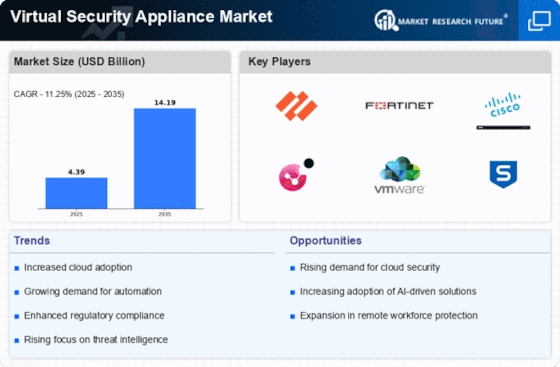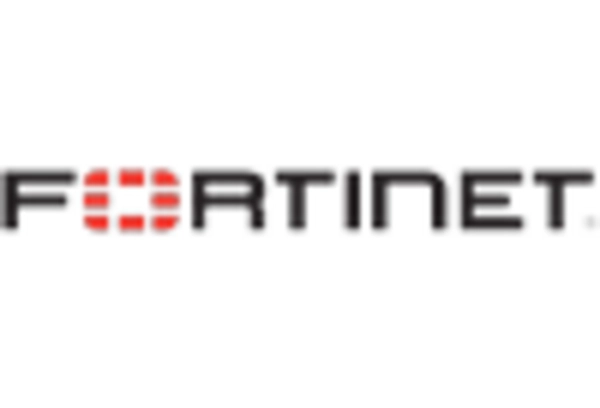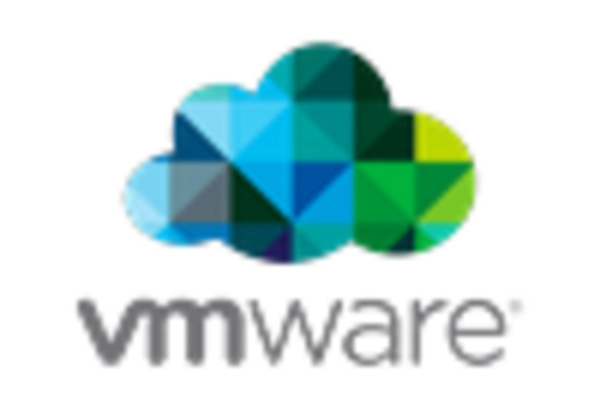Growing Adoption of IoT Devices
The proliferation of Internet of Things (IoT) devices is reshaping the landscape of the Virtual Security Appliance Market. As more devices connect to networks, the potential attack surface for cyber threats expands, necessitating enhanced security measures. Data indicates that the number of connected IoT devices is expected to reach billions in the coming years, creating a pressing need for virtual security solutions that can effectively manage and secure these devices. Organizations are increasingly recognizing the importance of implementing security appliances that can monitor and protect IoT environments. This trend is likely to drive growth in the Virtual Security Appliance Market, as businesses seek to safeguard their networks against vulnerabilities associated with IoT integration.
Increased Cybersecurity Threats
The rise in cybersecurity threats is a primary driver for the Virtual Security Appliance Market. Organizations are increasingly facing sophisticated attacks, including ransomware and phishing, which necessitate robust security measures. According to recent data, cybercrime is projected to cost businesses trillions annually, prompting a surge in demand for virtual security solutions. As companies seek to protect sensitive data and maintain operational integrity, the adoption of virtual security appliances becomes imperative. This trend is likely to continue, as the frequency and complexity of cyber threats evolve, compelling organizations to invest in advanced security technologies. The Virtual Security Appliance Market is thus positioned for growth, driven by the urgent need for enhanced cybersecurity measures.
Regulatory Compliance Requirements
Regulatory compliance is a critical driver for the Virtual Security Appliance Market. Organizations are increasingly required to adhere to stringent regulations regarding data protection and privacy, such as GDPR and HIPAA. Non-compliance can result in severe penalties, prompting businesses to invest in virtual security appliances that facilitate compliance with these regulations. The market data suggests that companies are prioritizing security solutions that not only protect data but also ensure compliance with legal standards. As regulatory frameworks continue to evolve, the demand for virtual security appliances is expected to rise, as organizations seek to mitigate risks associated with non-compliance. This trend underscores the importance of integrating compliance-focused security measures within the Virtual Security Appliance Market.
Remote Work and Digital Transformation
The shift towards remote work and digital transformation has significantly influenced the Virtual Security Appliance Market. As organizations adopt cloud-based solutions and remote working arrangements, the need for secure access to corporate resources has intensified. Data indicates that a substantial percentage of companies have accelerated their digital transformation initiatives, leading to increased reliance on virtual security appliances to safeguard remote connections. This trend is expected to persist, as businesses recognize the importance of maintaining security in a decentralized work environment. Consequently, the Virtual Security Appliance Market is likely to experience robust growth, driven by the demand for solutions that ensure secure remote access and data protection.
Rising Demand for Unified Security Solutions
The demand for unified security solutions is a significant driver for the Virtual Security Appliance Market. Organizations are increasingly seeking integrated security platforms that provide comprehensive protection across various vectors, including network, endpoint, and cloud security. Market data suggests that businesses are moving away from fragmented security approaches in favor of holistic solutions that streamline management and enhance visibility. This shift is likely to propel the adoption of virtual security appliances that offer unified capabilities, enabling organizations to respond more effectively to threats. As the complexity of security challenges grows, the Virtual Security Appliance Market is expected to benefit from the trend towards unified security solutions that simplify and strengthen overall security postures.

















Leave a Comment